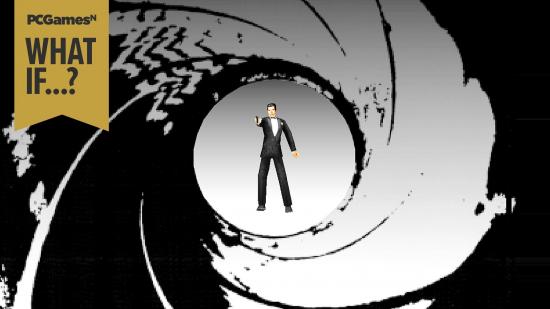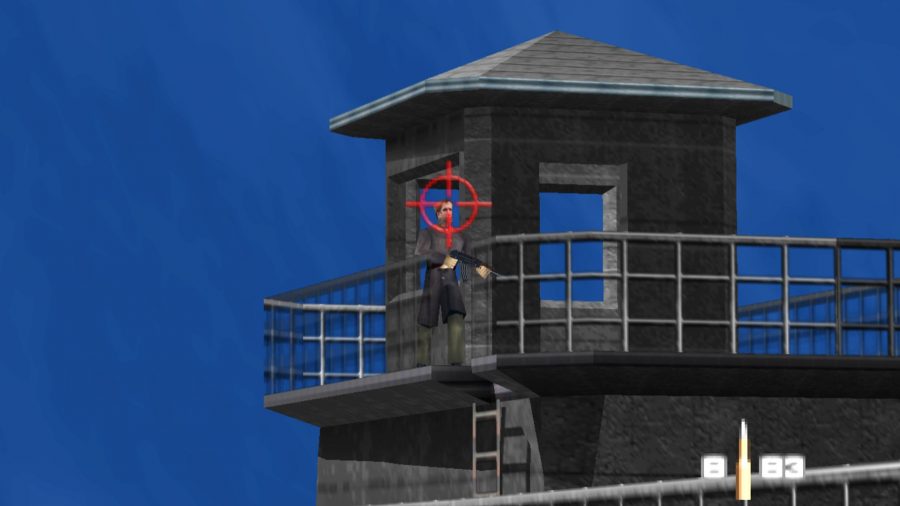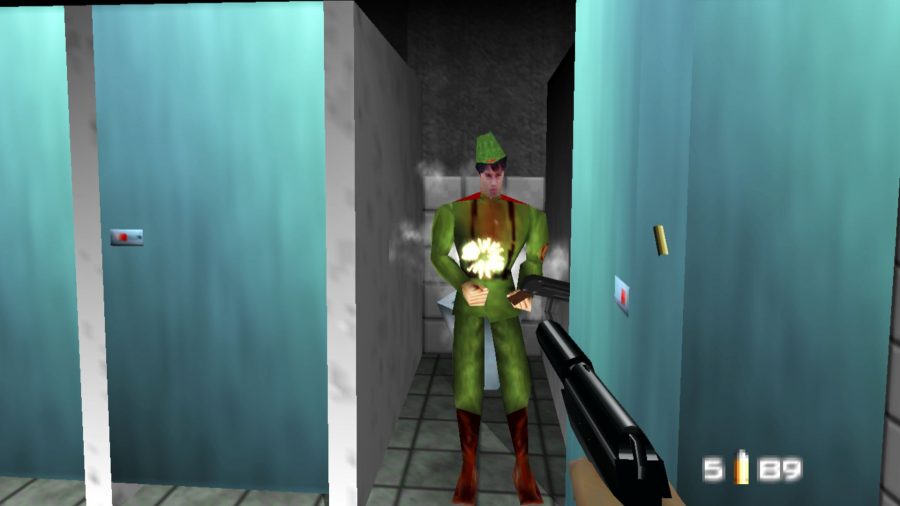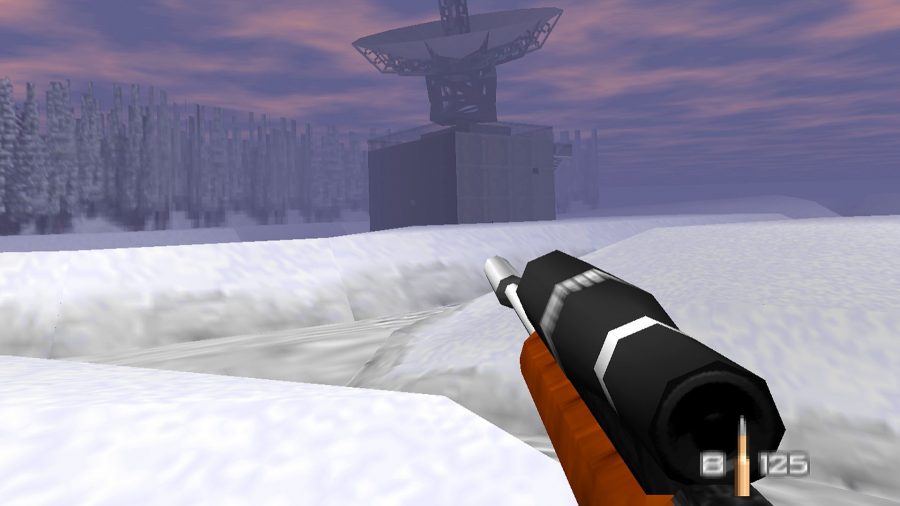There’s a beautiful, industry-shaping moment less than a minute into the opening “Dam” mission of GoldenEye 007, in which you ascend a watchtower and find a sniper rifle. It’s instantly clear what you’re meant to do: grab the sniper, zoom in on some bad guys, and shoot them in the face.
Please understand, in 1997 the term ‘FPS’ carried certain expectations like… labyrinthine levels, coloured keys, and mindless monsters. Then along comes Rare with a licensed Nintendo 64 FPS, which throws every pillar of shooter design out the window, save for the exploding barrels. Its levels feature a healthy balance of stealthy sequences and murder marathons, and the environments include a range of challenging side objectives. More importantly, every enemy you face has a brain: they’ll guard and patrol areas, flinch based on where you shoot them – no one expected the Donkey Kong Country studio to invent the crotch shot – and take cover when in combat. And if you don’t make a sound or get spotted, they’ll carry on with their business.
All of this technological and level design advancement, and yet Bond can’t jump. Isn’t that weird? Sure, the original Doom Guy can’t jump either, but most FPS game protagonists that came after him could leap like salmon. To be fair, squeezing a dedicated jump button onto the N64’s unique controller would have been no mean feat. But what if history had taken a different course and Rare had instead developed GoldenEye for PC? Could the humble spacebar have resulted in a bunny-hopping Bond? And if so, what else might have changed beyond the foul fuzz of 240p?
Let’s get the obvious out of the way. With all due respect to Nintendo’s iconic trident-shaped controller, it’s hard to think of many downsides from a switch to mouse and keyboard. Even in 1997, when a unified control setup like WASD had yet to crystallise, PC shooters enjoyed more mobility and less auto-aim than their console counterparts. Just the speed and precision afforded by a mouse would make those infamous Natalya escort sections much less frustrating – although, given a second bite at things maybe just junk them entirely.
An ideal consequence of this change would be an increase in enemy reaction speed. GoldenEye’s AI was rightfully praised on release, allegedly going on to influence Valve’s work on Half-Life, but as impressive as the sight of a Russian mercenary dodge-rolling into position was back in 1997, they do move with an uncanny, corpse-like stiffness. A snappier and more aggressive enemy force – one that swarms at the sound of a pin drop – would only intensify those action-packed encounters like barrelling through the armoured compartments of Train or chasing after Alec Trevelyan in Cradle.
Frankly, it’s hard to imagine Rare deviating too far from the sneaky spy shooter it ultimately delivered, even if it was never really a stealth game. GoldenEye has stealth in the same way that Thief has combat: it’s technically there, but rarely a viable option. Gunfights are an inevitability. This is a game in which even the chairs explode.
So why not leverage the power of late ’90s home computing to expand GoldenEye’s stealth systems? Put that inexplicable leaning mechanic to good use so we can spy on enemy patrol routes before they go full aggro. Better yet, let us lure guards out with some nifty Q Branch gadgetry for a silent headshot.
How about physics? Bond has always used the environment to his advantage, and having the ability to pick up and throw objects would let players incapacitate enemies or create distractions. Would this be a bit much to expect from a 3D action game a full year before Metal Gear Solid? Probably, but by this time Ultima Underworld had been out for five years – anything’s possible.
Assuming this had come to pass, it’s not outrageous to imagine the end result resembling an early immersive sim. Deus Ex was still a few years away, but with a few level design tweaks, it’s easy to see GoldenEye becoming the genre’s defining instalment. Why drop into that one specific toilet cubicle in the Facility level when there could be an alternate infiltration point further along the air vent, with a slightly different type of challenge awaiting the player? Why bother destroying security cameras and ceiling-mounted turrets when you can hack them and turn them against your foes?
Admittedly, we’d stand to lose a lot in this alternate reality. Alongside the classic single-player experience, GoldenEye is fondly remembered for its suite of extensive multiplayer options, which put the punching-distance hilarity of split-screen deathmatch on the map at a time when your options were mostly limited to kart racing or street fighting. The online LAN sessions of a PC version could have been legendary, but would they be worth sacrificing such an intensely sweaty slice of FPS history for?
And where does the carnage end? If you take a landmark game like GoldenEye off the N64, what becomes of future console shooters? Does id Software cancel all ports of Quake and Quake II? Does Turok 2: Seeds of Evil release without its spectacular dismemberment animations? Would Halo: Combat Evolved never change from being an RTS in the design documents of Bungie higher-ups? Are we denied the entire TimeSplitters trilogy!? The ramifications are truly unsettling.
Perhaps it’s best things worked out the way they did. Rare not only proved that shooters could work on a console, but that they could be more than just Doom clones and Quake killers. Many will see it as the first step towards an era of regenerating health and iron sights, but it takes all sorts to make a world. And hey, if that recently leaked achievement list points to anything, then maybe we’ll get to play some GoldenEye on PC after all.



